There are two main categories of design files: vector and raster. In this guide to logo file types, we will explain what each file type means, and hopefully you'll understand why it's so important that you have all the files of your logo.
Vector Files
A vector file can be scaled to any size without any loss of quality. This is because it’s built up from mathematically precise points. You can see how a vector shape is built up in this image below.

Vector files are best for having anything professionally printed, or if any design work will be carried out by another designer, for example: brochures, leaflets, exhibition stands, vehicle graphics etc.
As vector files are intended for print use, they are usually provided in CMYK colour mode. CMYK stands for cyan, magenta, yellow and black, which are the 4 colours used to make up all other colours on a full colour printed page.
If you could give only one file type, it would be a vector file, as it can be converted to any other file type with the correct software.
Vector file types have a file extension of .ai .eps or .pdf.
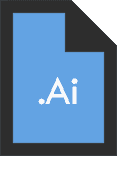
Ai: Adobe Illustrator
The Ai file is the original, editable, working file.

PDF: Portable Document Format
PDF format is becoming widely favoured by most designers as it can be universally viewed on any computer with Adobe Acrobat (or another PDF viewer). It’s also possible to preserve illustrator-editing capabilities when saving in this format, meaning it can be opened and modified in the same way a AI file can.

EPS: Encapsulated PostScript
EPS file types are sometimes considered a little outdated. Before Adobe introduced its page layout software InDesign, the industry standard software of its type was QuarkXPress. Back then if you wanted to use a vector image in your document, you couldn’t import native Illustrator files as you can now, instead you had to save your AI file as an EPS. With its release of InDesign, Adobe made it easy to place native Illustrator and Photoshop files into a document. Occasionally EPS files may be requested by print companies who are using older technology.
Colour Variants
When providing vector logo files, it’s also important to provide various colour formats, which we have detailed below:
Full Colour (CMYK)
This is the file for standard 4 colour printing. If you provide only one of these variants, ensure it’s this version.
Pantone Colour
Pantone is a universally understood colour coding system that’s used by designers and print companies. The problem with CMYK printing is that from print run to print run, there will be slight colour differences. This is because 4 separate inks are being used to build up the colour. With Pantone however, a single ink is used, meaning the colours should match exactly in all instances.
Single Colour (Black & White)
In some instances, a single colour version of the logo will be needed. For example, this may be useful for frosted vinyls for glass, or single colour documents.
White
A white version of the logo is to be used on coloured backgrounds or on dark images where good contrast is needed. With white logos, sadly it’s not simply a case of changing the colour and saving the file. There’s a little more that needs to be done.
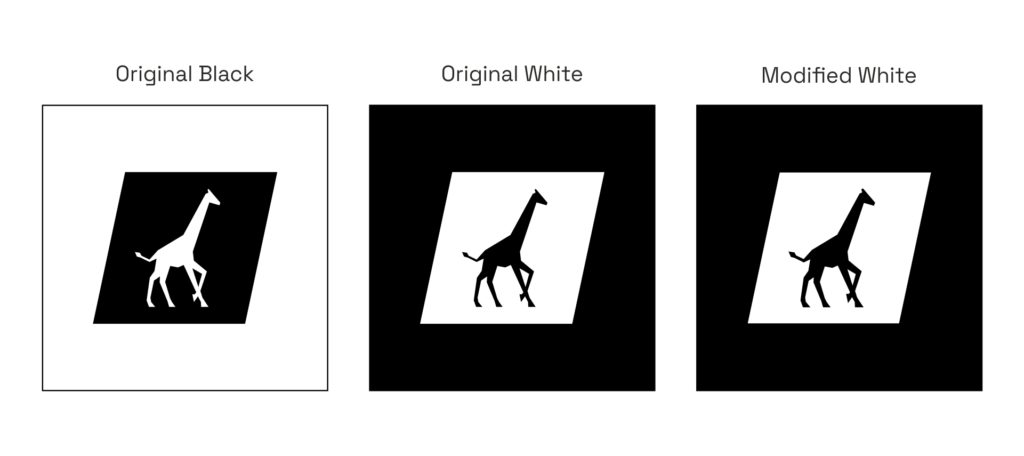
As you can see from the image above, when a black on white object is reversed we experience what’s known as irradiation phenomenon; whereby the white version looks a fraction larger—notice how at a glance, the box appears larger, and our giraffe icon looks a little skinnier. To counteract this illusion, it’s important to slightly reduce the overall weight of the logo.
Raster Files
Raster files are built up of small squares called pixels. This means that as you increase the size of your image, it will become blocky, or appear to be blurred. This is why a logo design should be created in vector format for the best results.
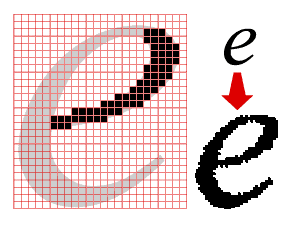
Raster files are intended for computer use, so are provided in RGB colour mode. RGB stands for red, green and blue, which are the colours used to make up all the colours you see on your screen. Black is the absence of light.
Raster file types have a file extension of .jpg or .png (there are other raster based image types, such as GIF, BMP and TIFF, but for logo design these two alone should be sufficient).

JPG/JPEG: Joint Photographic Experts Group
JPGs are most commonly seen online. This is because JPG offers very good compression, without overly degrading the image, meaning the image is very small in file size, so will load quickly.

PNG: Portable Network Graphics
PNG images are lossless, which mean they do not lose quality during editing. Most importantly however, they allow for transparency.
Still not sure about logo file types?
If your question hasn't been answered by this blog, please don't hesitate to contact us and ask!
Email - info@giraffe-graphics.co.uk
Give us a call - 01246 766770
Book an appointment - Visit us at our Chesterfield showroom
Buying business cards can be a minefield, especially when printers start asking questions you don't know the answers to. What does it all mean?
Let me share with you my 10 top tips when buying business cards...
Tip 1: Weight Matters
'GSM'; what does that even mean? It simply means how heavy the paper is. For example, 90-100gsm is the standard weight of household printer paper, and when paper gets to around 350gsm, it's considered card. Here at Giraffe, we think the perfect paper weight for business cards is 450gsm; thick enough that it feels premium, but not so thick that it's too expensive!
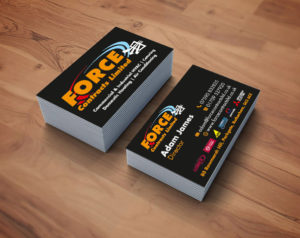
Tip 2: Use Both Sides!
When someone hands you a business card, what do you do? You naturally look at the front, then turn it over to look at the back. I shiver with disappointment when I flip a card over and there is NOTHING there! Why? Why, would you waste 50% of your advertising space? All of our business cards come double sided as standard. You can use the back of your card to showcase your business strap line, a few key services, or your business logo.
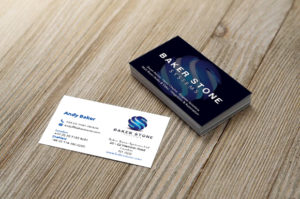
Tip 3: Gloss or Matt?
To laminate or not to laminate, that is the question. A glossy business card will have a shiny finish, but I tend to think of glossy card as photograph paper... Not really ideal when it comes to a business card. I personally feel glossy finishes have gone out of fashion a little in recent years, and most people choose matt-laminated cards. Ladies, do you remember in the 2000's when we all had tacky, gloss lip glosses? Today we're more likely to wear matt—see!
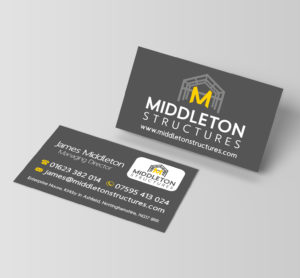
Tip 4: Shape & Size
Should I change the shape of my business card or use spot UV? Changing the shape of your business card from the standard side is an additional cost, and one I'm not fond of. A lot of people keep business cards in folders, where a crazy shaped card simply won't fit. Rounded corners and spot UV are a great way to stand out, but there will always be an additional cost—it depends whether you think it's worth it! A good weighted card, with a nice laminated finish is often enough.
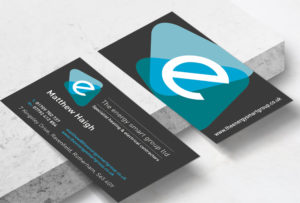
Tip 5: Quantity
How many cards should I order? Business cards usually come in packs of 250, 500, 1000 and more. Often it's not much more to buy 1000, than it is to buy 500; so if you know your contacts details won't change, you could make a great saving. Be sure to check out special offers too!
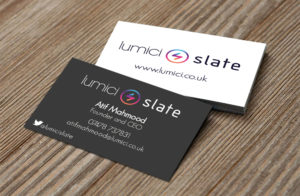
Tip 6: Make Sure You're Contactable
What information should I include on my business card? We recommend:
- Business logo
- Your full name
- Job title
- Phone number
- Email address
- Website address
You must include at least two contact methods—think about why you give out your business card... So people can contact you!

Tip 7: You're Allowed to Blow Your Own Trumpet
Should you include your job title on your business card? Is it pretentious to put 'CEO' or 'Director'... Even if there is just you? In my experience, it's useful to know a person's official title within the company. If you decide to recommend them, it's useful to know what to introduce them as!

Tip 8: Be Consistent!
Keep the design of the business card in keeping with your brand identity! You should use your company colours, fonts and style. This is why it's important to invest in a great design; if your business card matches your website, which matches your uniform, it looks seamless and professional.
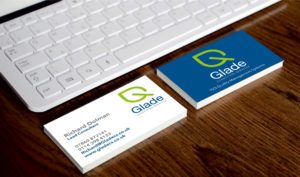
Tip 9: Keep It Short & Sweet
Keep it simple. Your business card is not a leaflet. I repeat: your business card is not a leaflet! If you cram every single thing you do onto it, it just looks messy and unprofessional. A short list of your services is fine, but less is definitely more!
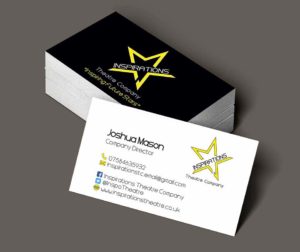
Tip 10: Typos Will Cost You
As with everything you have printed, check your details and then check them again! There is nothing worse than 1000 business cards with one digit wrong in your phone number! It's an expensive mistake, so check, check and check again!
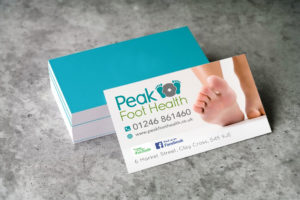
If you'd like to order business cards, you can click here.
Still unsure about buying business cards?
If you need help with business cards or if you're looking for some advice, feel free to get in touch:
Email - info@giraffe-graphics.co.uk
Give us a call - 01246 766770
Book an appointment - Visit us at our Chesterfield showroom